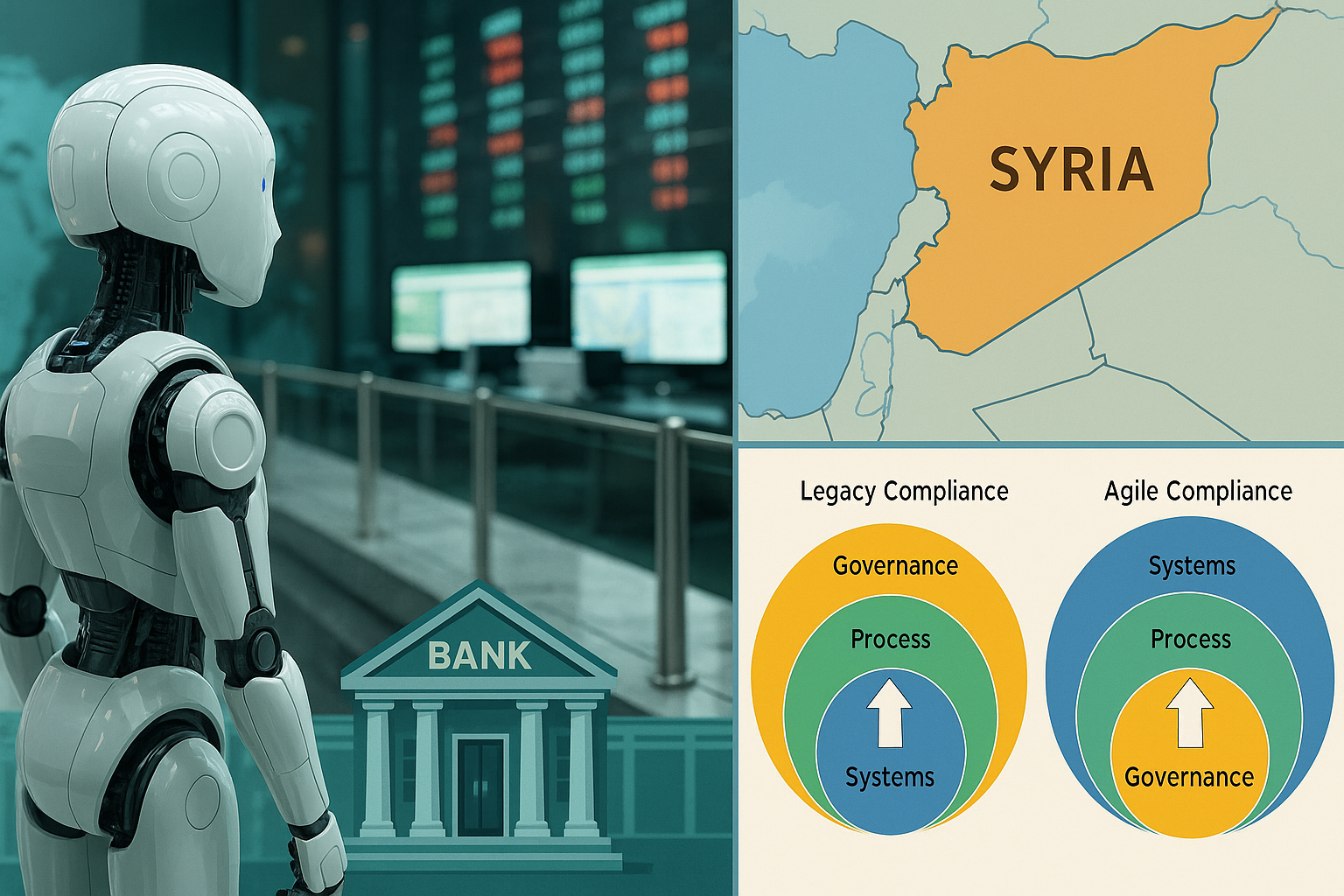A Conversation with California's Commissioner on RegTech

Jan Lynn Owen was appointed the first Commissioner of the Department of Business Oversight by Governor Edmund G. Brown Jr. on July 1, 2013. Her department oversees more than 360 thousand licensees, four thousand small business lenders and 400 non-deposit mortgage companies in addition to more than 240 banks and credit unions in the state of California.
I sat down with Jan Lynn Owen in her San Francisco office to get her thoughts on banking, technology, regulation and the future of financial services in California.
Shirish Netke: As the chief regulator for the 5th largest economy in the world and ground zero for technology innovation in Silicon Valley, you have a unique perspective on financial services regulation as it applies to banks, financial institutions and fintechs. How does regulation and innovation co-exist and even thrive in California? How is this different from other states of the union?
Jan Owen: As the world’s fifth largest economy, it’s important to note that the business climate in California is driven not so much by federal policies as it is international economic conditions and policies. California is the epicenter of the “fintech” or financial technology movement. Many of the largest and most innovative fintech operations are based here, in Silicon Valley and the San Francisco Bay Area.
Regulating California’s financial services sector is an intriguing challenge. In the process, we are often setting the standard for other regulators across the nation and around the world. We know that as technology emerges, and the economic landscape evolves, regulators must adapt as well. The last thing we want to do is to choke innovation or prematurely shut down a promising idea. But our primary mission is consumer protection.
Consumer protection doesn’t always mean regulators leaping into action. For a new product, we lack experience and familiarity with its operation. As such, early on, it’s difficult to know what the best practices may be for keeping the product safe for consumers.
It’s also important to note that, when regulators announce their involvement, we risk prematurely legitimizing fledgling technologies and products. In other words, regulator involvement can attract consumers to a product they don’t understand, aren’t ready for, or that may not be ready for them.
Our general position is that firms that lend to consumers and small businesses in California, must comply with current state lending laws, including requirements to be licensed by the DBO. That obligation doesn’t disappear just because the firm calls itself a fintech company.
I have always had an open-door policy and encourage those with new fintech products to meet with us. Many fintech entrepreneurs have approached us about how to work within our regulatory system. Many still lurk at the edges and actively avoid regulatory compliance.
Some state-chartered banks have started to engage in the fintech sector, mostly through partnerships with non-depository lenders. Some non-depository lenders, such as SoFi, Square, VARO and, just recently, Robinhood, have pursued becoming banks, mostly through “industrial bank charters” in states with more lenient requirements. This concerns us.
Some members of the fintech community have pushed for uniform, federal regulation of their industry. I believe, and I think the record shows, that state regulators like the DBO are better able to both prevent injury to consumers and redress it after it happens.
States have taken steps to address the fintech industry’s legitimate concerns with a multi-state regulatory system. We’re working through the Conference of State Bank Supervisors to advance a regulatory structure that allows the industry to operate across jurisdictional lines with optimal efficiency and less compliance risk. The aim is to utilize existing, proven systems such as the Nationwide Multistate Licensing System (NMLS).
Shirish: RegTech is now being commonly used as a variation of FinTech as it applies to innovative technology for regulation. From your perspective, how have banks embraced technology innovation in the area of regulatory compliance?
Jan: We have worked to update and modernize our systems at the DBO, some of which were developed a while ago and were essentially “legacy” systems when I arrived. We now have a state-of-the-art interactive application and reporting database that is available for licensees to file necessary documents. It is also accessible for the public to review licensing and enforcement information about financial services firms.
Technology has improved the financial services industry in many ways, not the least of which is the accessibility and interactivity of providers with consumers.
Most banks have adopted technologies – and even partnered with fintechs – to modernize and streamline their operations for the sake of customer demand as well as for regulatory compliance. We at the DBO have worked with banks and credit unions to optimize compliance.
Shirish: There is a lot of discussion around Open Banking for banks to work with innovative new companies in the financial services industries. Why is this not talked about as much in the US as it is Europe?
Jan Owen: A couple of things. Plain old Inertia. It is hard to change such a well-established industry. Plus, the U.S. is still far and away the leader in financial services worldwide. I think you have to answer the question, “why fix it if it’s not broken?”
Open banking is meant to improve customers’ banking experience in several ways. Ideally, it should force large, established banks to be more competitive with smaller and newer banks, resulting in lower costs, better technology, and better customer service.
The regulatory side of open banking should require banks to publish accurate and unbiased information that lets consumers evaluate their service quality. Such transparency could certainly motivate banks to provide the best possible customer experience.
As Application Programming Interfaces (APIs) are developed, it should get easier for customers to switch banks and shop for individualized service. Through the use of networked accounts, open banking could also help banks and other lenders get a more accurate picture of a consumer’s financial situation and risk level in order to offer more appropriate loan terms and tailored products.
But it is all a little scary for banks. They risk losing customers if they do not innovate and compete for customers. They can embrace it or lose out.
In the meantime, U.S. regulators seem to prefer to follow, instead of lead, in the matter of access to banking data. The advantage is that Europe and other countries can work out some of the bugs before the U.S. fully embraces it.
Shirish: Technologists in Silicon Valley are sometimes labeled as “solutionists” for their propensity to create solutions in search of problems. Can you give examples of three real business problems in financial services that you would ask these innovators to address?
Jan: First, let me say that the DBO will always work with innovators. We are mindful of our job as regulator for the sake of consumer and investor protection. But we are also very aware of our place in securing a fair and healthy financial services marketplace overall. We will not relinquish our consumer safety role but are committed to being no more restrictive than necessary on innovation and growth in financial services.
As for “problems” to be solved, Artificial Intelligence is being talked up as a great new innovation. It has promise to streamline regulatory compliance and reporting and even responses to complaints. But we will watch to make certain that consumer protection standards are not relaxed in the process.
In terms of regulation and oversight, technology has improved the speed, integration and thoroughness of compliance. But customer privacy is a big concern; we could use some help in ensuring a proper balance.
Still being developed is the ANALYTICAL side of reporting. We are awash in information, but the mere compilation of data is not enough. We need to be able to analyze and understand the data and what it means for consumers, economic growth and regulatory compliance. We are still evolving.
Finally, as a regulator, I am very concerned with consumer protections as the volume and speed of transactions increase. We do not want to stand in the way of greater efficiencies, but we must be certain that safeguards are in place – AND being followed.
Shirish: The California Consumer Privacy Act (CCPA) has created a lot of anxiety for financial institutions as well as technology companies in the state. This is unchartered territory, especially for technology companies. You know the California financial services ecosystem very well. What would be your advice to companies to prepare themselves for January 2020 when CCPA goes into effect?
Jan: Embrace the change. This is new for everyone. Grow and adapt with us. Privacy is a real concern for everyone. But speed in service and ease of access is also important.
Compliance with the CCPA will not be cheap. Banks, especially smaller institutions, may need to hire lawyers and technology consultants to determine how to comply with the CCPA. They may need to hire a full-time in-house employee for regulatory compliance (or find a good vendor).
While the CCPA was intended to eliminate the collection and sale of “personal” information, the law may have the unintended consequences of disconnecting banks and credit unions from their customers and potential customers by classifying everything as personal information. This may disrupt the ability to share information for the sake of good business practices, and even customer service, by making it more difficult to divulge personal information.
We all need to work to honor the intentions of the law while preserving the best features in our current institutional structures.
Shirish: Finally, Californian innovation has changed the state and arguably, the whole world in the last 10 years. What do you think the California ecosystem of banks, fintechs, money services businesses would look like in 2029?
Jan: Some on my staff have suggested that fintech could eclipse traditional banking and make it obsolete within the next decade. But some said television would kill the movie industry and we know how that turned out.
I think there will always be a place for the fairly traditional model of depository institutions. But I also think we will see more competition with fintech and more partnerships between banks and fintechs.
Multi-state and even international cooperation among regulators is important as technology seems to shrink the world further day by day.
Fintech companies and other financial services innovators must be transparent with regulators and engage as much as possible. The DBO welcomes that approach. We always have, and I think we always will.
This interview was originally published in SandHill.com . Jan Lynn Owen is now Senior Advisor at Mannatt Financial Services.
Posts by Tag
- big data (41)
- advanced analytics (38)
- business perspective solutions (30)
- predictive analytics (25)
- business insights (24)
- data analytics infrastructure (17)
- analytics (16)
- banking (15)
- fintech (15)
- regulatory compliance (15)
- risk management (15)
- regtech (13)
- machine learning (12)
- quantitative analytics (12)
- BI (11)
- big data visualization presentation (11)
- community banking (11)
- AML (10)
- social media (10)
- AML/BSA (9)
- Big Data Prescriptions (9)
- analytics as a service (9)
- banking regulation (9)
- data scientist (9)
- social media marketing (9)
- Comminity Banks (8)
- financial risk (8)
- innovation (8)
- marketing (8)
- regulation (8)
- Digital ID-Proofing (7)
- data analytics (7)
- money laundering (7)
- AI (6)
- AI led digital banking (6)
- AML/BSA/CTF (6)
- Big Data practicioner (6)
- CIO (6)
- Performance Management (6)
- agile compliance (6)
- banking performance (6)
- digital banking (6)
- visualization (6)
- AML/BSA/CFT (5)
- KYC (5)
- data-as-a-service (5)
- email marketing (5)
- industrial big data (5)
- risk manangement (5)
- self-sovereign identity (5)
- verifiable credential (5)
- Hadoop (4)
- KPI (4)
- MoSoLoCo (4)
- NoSQL (4)
- buying cycle (4)
- identity (4)
- instrumentation (4)
- manatoko (4)
- mathematical models (4)
- sales (4)
- 2015 (3)
- bitcoin (3)
- blockchain (3)
- core banking (3)
- customer analyitcs (3)
- direct marketing (3)
- model validation (3)
- risk managemen (3)
- wearable computing (3)
- zero-knowledge proof (3)
- zkp (3)
- Agile (2)
- Cloud Banking (2)
- FFIEC (2)
- Internet of Things (2)
- IoT (2)
- PPP (2)
- PreReview (2)
- SaaS (2)
- Sales 2.0 (2)
- The Cloud is the Bank (2)
- Wal-Mart (2)
- data sprawl (2)
- digital marketing (2)
- disruptive technologies (2)
- email conversions (2)
- mobile marketing (2)
- new data types (2)
- privacy (2)
- risk (2)
- virtual currency (2)
- 2014 (1)
- 2025 (1)
- 3D printing (1)
- AMLA2020 (1)
- BOI (1)
- DAAS (1)
- Do you Hadoop (1)
- FinCEN_BOI (1)
- Goldman Sachs (1)
- HealthKit (1)
- Joseph Schumpeter (1)
- Manatoko_boir (1)
- NationalPriorites (1)
- PaaS (1)
- Sand Hill IoT 50 (1)
- Spark (1)
- agentic ai (1)
- apple healthcare (1)
- beneficial_owener (1)
- bsa (1)
- cancer immunotherapy (1)
- ccpa (1)
- currency (1)
- erc (1)
- fincen (1)
- fraud (1)
- health app (1)
- healthcare analytics (1)
- modelling (1)
- occam's razor (1)
- outlook (1)
- paycheck protection (1)
- personal computer (1)
- sandbox (1)
Recent Posts
Popular Posts
Here is a funny AI story.
Every community bank CEO now faces unprecedented...
On May 13, 2025, the U.S. government announced...



